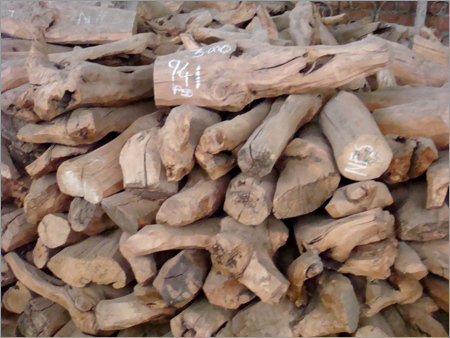Introduction
Agarwood, also known as aloeswood, is a highly prized aromatic resin derived from the heartwood of certain species of trees. With its rich cultural heritage and diverse applications in perfumery, traditional medicine, and religious rituals, agarwood holds significant economic value. However, the growing demand for agarwood products has led to overharvesting and illegal logging, posing threats to both the trees and their ecosystems. In response to these challenges, innovative approaches are emerging to drive sustainable agarwood production, ensuring the conservation of precious resources while meeting market demands.
Understanding Agarwood
Agarwood is formed in the heartwood of specific tree species belonging to the genus Aquilaria. When these trees undergo stress, such as physical injury or fungal infection, they produce resin as a defense mechanism, resulting in the formation of agarwood. The resin imbues the wood with a distinctive fragrance that is highly sought after in various industries. Historically, agarwood has been prized in cultures across Asia and the Middle East for its medicinal properties and use in incense and perfume.

The Importance of Sustainable Production
Sustainable agarwood production is essential for preserving the biodiversity of forests and ensuring the long-term viability of agarwood-producing tree species. Unsustainable harvesting practices, including illegal logging and habitat destruction, have led to the depletion of wild agarwood resources and threatened the survival of key tree species. By adopting sustainable production methods, stakeholders can mitigate these threats and promote the conservation of natural habitats and ecosystems.
Innovations in Agarwood Cultivation
-
Agarwood Singapore Initiative: Singapore has emerged as a pioneer in sustainable agarwood production through initiatives like Agarwood Singapore. This initiative focuses on research, technology development, and capacity building to support the cultivation of high-quality agarwood in controlled environments. By leveraging advanced techniques such as tissue culture propagation and artificial induction of resin formation, Aloeswood Singapore aims to increase agarwood production while reducing pressure on wild populations.
-
Biotechnology and Tissue Culture: Biotechnology plays a crucial role in agarwood cultivation by facilitating the mass propagation of elite tree clones through tissue culture techniques. This enables researchers to select and propagate agarwood-producing trees with desirable traits, such as high resin content and fast growth rates. By accelerating the breeding process and producing genetically uniform seedlings, biotechnology contributes to the sustainability and productivity of agarwood plantations.
-
Artificial Induction of Resin Formation: Traditional methods of agarwood production rely on natural stressors to induce resin formation in trees. However, these methods are often unpredictable and time-consuming. Innovations in artificial induction techniques, such as mechanical wounding, fungal inoculation, and chemical elicitation, offer more controlled and efficient ways to stimulate resin production in agarwood trees. By optimizing the timing and intensity of these treatments, growers can enhance resin yields while minimizing tree damage.
Technological Advancements
-
Remote Sensing and Monitoring: Remote sensing technologies, such as satellite imagery and drones, are increasingly being used to monitor and manage agarwood plantations. These tools provide valuable insights into vegetation health, growth patterns, and environmental conditions, allowing growers to optimize plantation management practices and detect potential threats, such as pests and diseases, in real time.
-
Precision Agriculture: Precision agriculture techniques, including soil and water monitoring, nutrient management, and irrigation automation, enhance the efficiency and sustainability of agarwood cultivation. By precisely regulating inputs and resource allocation, growers can minimize waste, reduce environmental impact, and maximize crop yields. Additionally, precision agriculture technologies enable data-driven decision-making and predictive analytics, empowering growers to optimize production strategies and mitigate risks.
Challenges and Future Directions
Despite the advancements in sustainable agarwood production, several challenges remain to be addressed. These include:
-
Cost and Accessibility: Many of the innovative technologies and techniques for agarwood cultivation require significant investment in research, infrastructure, and equipment. Ensuring affordability and accessibility for small-scale growers and communities in agarwood-producing regions is essential to promote widespread adoption of sustainable practices.
-
Regulatory Frameworks: Effective regulatory frameworks and enforcement mechanisms are needed to combat illegal logging and ensure compliance with sustainable harvesting practices. Strengthening legal protections for agarwood-producing trees and implementing traceability systems can help prevent overexploitation and promote responsible trade.
-
Community Engagement: Engaging local communities and indigenous peoples in agarwood conservation and management is critical for ensuring the success and sustainability of cultivation initiatives. Empowering communities through education, training, and equitable resource-sharing mechanisms fosters ownership and stewardship of agarwood resources.
In conclusion, innovative approaches and technological advancements are driving sustainable agarwood production, offering promising solutions to the challenges of overharvesting and habitat destruction. Initiatives like Agarwood Singapore demonstrate the potential of research, technology, and collaboration to promote environmental conservation and economic development in agarwood-producing regions. By harnessing the power of innovation and embracing principles of sustainability, stakeholders can ensure the continued availability and vitality of agarwood resources for future generations.
Congrats! You’ve Finished This Blog.



